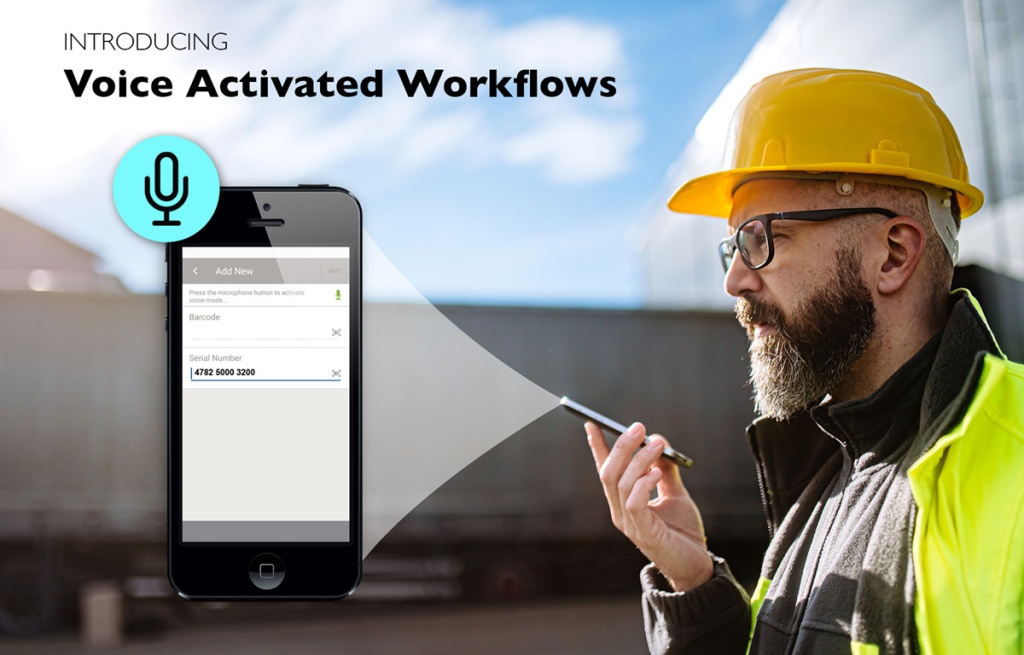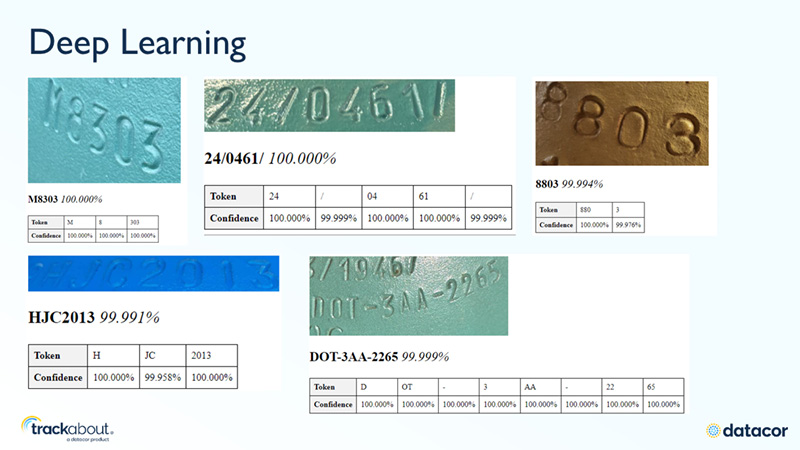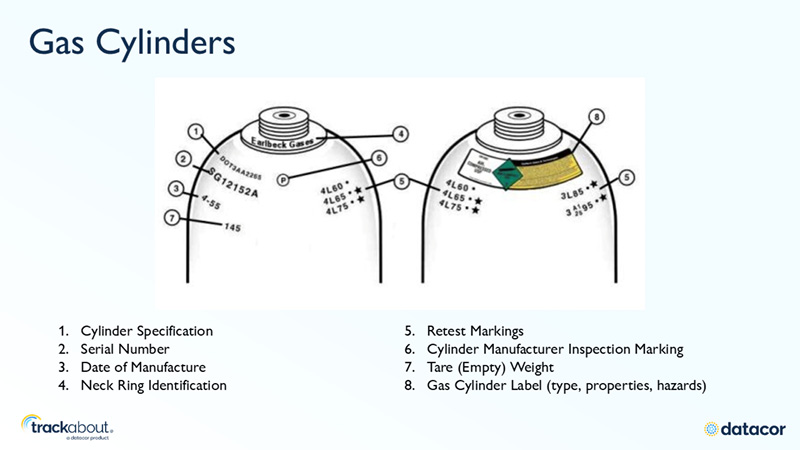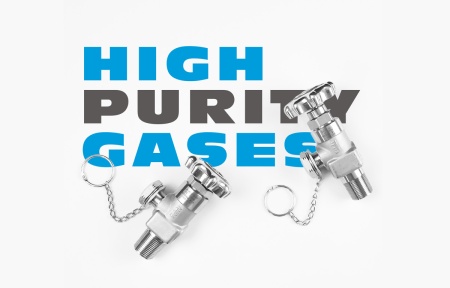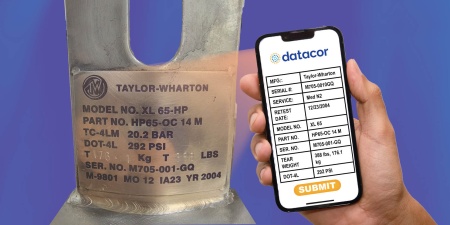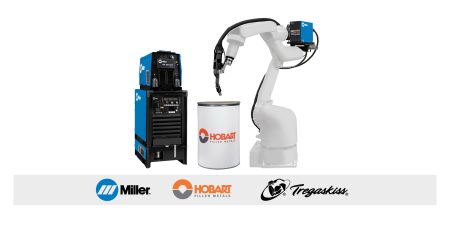TRACKABOUT: Voice-to-Text That Speeds Cylinder Registration
Tired of keying long serials, dates, and specs with cold hands and a line of cylinders waiting? TrackAbout’s new voice-to-text turns asset registration into a hands free and heads up task. Speak the values, keep moving, and let the system capture what used to slow you down.
WHY IT MATTERS
Manual entry is slow, error-prone, and tiring. Cylinder setup asks for serial numbers, manufacturer details, sizes, contents, test dates, and more. Every extra tap invites a mistake or a redo. Voice-to-text, delivered through TrackAbout’s Voice Activated Workflows, helps teams enter accurate information faster, with fewer interruptions and fewer corrections. It also supports the simple goal that matters on the floor: keep your gloves on, keep your eyes on the work, and keep moving.
HOW IT WORKS
Within TrackAbout Mobile, voice-to-text lets users speak field values during cylinder and container registration. The app prompts, you answer, it fills the field and then moves to the next prompt. If something needs to be changed, make a quick correction and keep going. Dates, which often take the longest to type and double-check, become a short spoken entry.
Because the interaction is verbal, teams spend less time looking down and more time staying aware of their surroundings. This reduces the back-and-forth between the screen and the asset and helps reduce transposed digits and other common mistakes.
The flow mirrors the forms your crews already use. It works alongside the capture tools your teams rely on every day, so people can say what needs to be said and move on. The aim is steady motion, fewer pauses, and fewer retries.
“Voice-driven AI is the game-changer that’s flipping the script on human–tech interaction—transforming everyday devices into natural, conversational companions that not only understand us but anticipate our needs,” said Datacor’s Chief AI Officer Sundar Kuppuswamy. “By shifting from touch to conversation, we’re making technology not just faster but more human-centered, something that fits the way people naturally work.”
Short interactions matter on a busy dock. Prompt, response, confirm, next. That rhythm keeps attention on the asset and the area around it, which helps with both speed and safety.
TRACKABOUT VOICE PROMPTING IS BUILT FOR CYLINDER REALITY
Elizabeth Wallace, VP of Product for TrackAbout, describes the intent in practical terms. Instead of tapping, scrolling, and typing through long forms, users move around the cylinder and provide the details out loud. That flow fits the rhythm of a dock, fill plant, or warehouse. It also means less stop, start, and screen poking when you are working in cold weather or wearing heavy gloves. The result is smoother motion, less friction, and cleaner data at the source.
She emphasizes that the goal is to make registration match the way the work actually happens. If a process slows people down, they work around it or avoid it entirely. Voice-to-text keeps the process in step with the job.
Whether you are setting up new assets, processing returns, or closing out a batch after inspection, the hands-up approach matches the pace of the work. The fewer times a team needs to put a device down, remove gloves, or re-key a field, the faster and cleaner each cycle becomes.
IMPACT YOU CAN MEASURE
When registrations speed up, everything downstream benefits. Asset managers see cleaner records, with fewer corrections later. Drivers and warehouse teams get through stacks faster. Safety and compliance staff field fewer serial number and date issues. Billing and rental accuracy improve when master data is right the first time. Training also gets easier. New users understand a voice-guided flow quickly, which shortens the ramp and reduces errors in the first weeks on the job.
Leaders can track units per hour, corrections per hundred assets, and first pass accuracy to see the lift. Fewer transposed serials mean fewer billing delays, and fewer date mistakes mean cleaner compliance records. The effect compounds as better data flows into planning, purchasing, service, and customer reporting.
The human side shows up as well. Crews spend less time typing, and they make fewer stops to remove gloves. That adds up to less fatigue and a smoother day.
“The most exciting part about voice-driven AI reducing friction is how it blends automation and human control,” added Kuppuswamy. “Workers can command complex systems effortlessly while keeping judgment, creativity, and empathy in human hands. AI executes routine tasks instantly; people stay focused on the parts of the job that matter most.”
A LINK TO EARLIER GAINS
This feature extends TrackAbout’s broader push to make everyday tasks faster and more reliable. Our article in the 2nd Quarter 2025 Issue of Welding & Gases Today highlighted how modern capture tools improve intake and strengthen the data that drives forecasting, maintenance, and rental decisions. Voice-to-text adds another practical, easy-to-adopt step forward for crews who register, move, and manage assets all day. Both of these are just some examples of TrackAbout’s long-term vision for AI and intelligent automation at TrackAbout and how these tools make our customers’ jobs easier.
TrackAbout also shared more context in a recent webinar session titled, “Intelligent Automation Is Transforming the Industrial Gases Industry.” That discussion underscored how smarter capture at the point of work lifts quality across the board.
LEARN MORE FROM THE FLOOR
GAWDA TV interviewed Elizabeth Wallace from the floor of the Spring Management Conference in Dallas about voice prompting and the role of accurate data in better decisions. Watch the interview to learn more about TrackAbout’s AI capabilities, including voice-to-text and Optical Character Recognition, and how they are driving the industry forward.
GETTING STARTED
If you already run TrackAbout Mobile, start by enabling Voice-Activated Workflows for a team that handles cylinder registration daily. Measure the baseline time per asset, the error rate on serials and dates, and how often users stop to remove gloves. After a short pilot, expand to other crews and shifts. Use the measured results to size the impact across plants and branches.
Pick a small, experienced group as your pilot. Designate a floor champion to collect quick tips, like which phrases your team prefers for dates and formats. Keep a simple scorecard for the first two weeks, then share results and best practices. Once the pattern is set, roll out to adjacent shifts, then other branches. Fold the new steps into your standard work instructions and make a short refresher part of new hire onboarding.
THE BOTTOM LINE
Voice-to-text makes cylinder registration faster, safer, and more accurate. It fits the way the work actually happens, and it pays off in cleaner data and smoother days. To see how voice can streamline your workflow, visit TrackAbout’s website, or contact them today.




